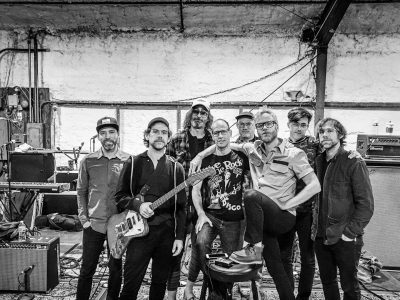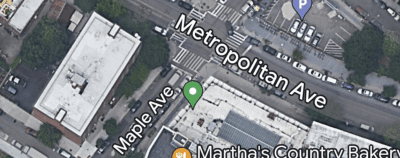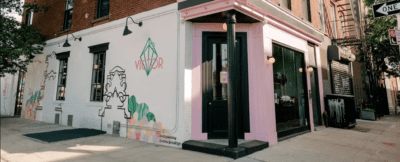Photo by Lilac Burrell
The ‘Queer Permutations’ of Chuck Nitzberg
In an exhibit at the Black Brick Project, the artist is drawing and painting men ‘as a way to connect with my own self’
The gallery window at Black Brick Project reads “sensitive material inside” and a thin black curtain hangs in front of the door. Upon entering the gallery, the first thing you see is a tall print of two bodies flushed in pomegranate red, flirty magenta and vivid gamboge leaning on the wall. They lead the eye to three paintings that show male bodies made of gouache and acrylic, which gives the models texture beyond paper, that peek from behind a layer of skin-toned and clear Band-Aids.
These are Chuck Nitzberg’s “Queer Permutations,” the focus of the Black Brick Project’s first solo exhibit, which seeks to raise the visibility of gay and queer visual artists. Fluidly painted and flamboyantly colored figures are framed around the white walled gallery and invite public eyes.
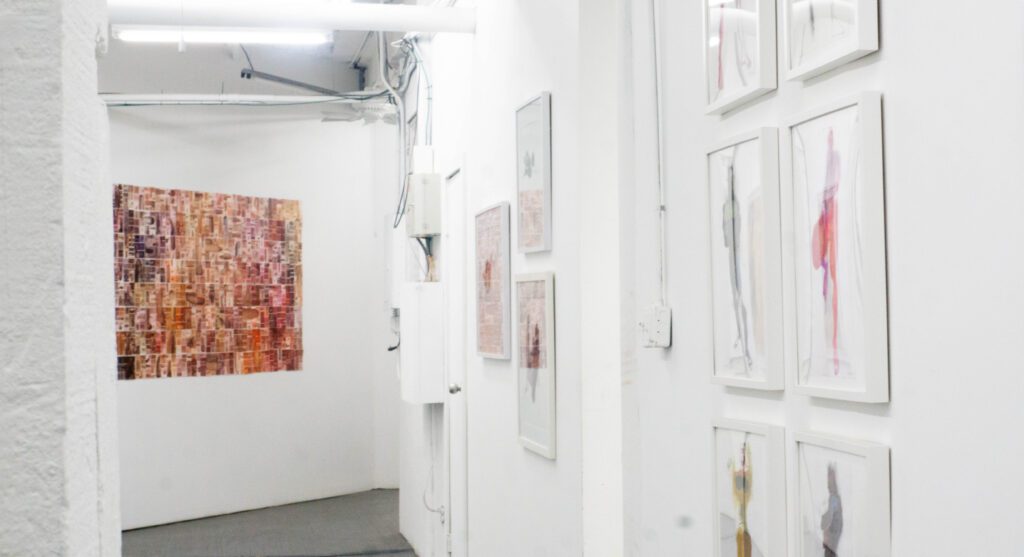
A wall-sized collage of penises at Black Brick Project (Photo by Lilac Burrell)
“I feel that I’m drawing and painting men as a way to connect with my own self,” Nitzberg tells Brooklyn Magazine. “I’m looking at bodies and then I look at my own body and all like it’s perfect.”
Tucked away at the corner of Flushing Ave and North Oxford Street, a block from Fort Greene Park, NItzberg’s exhibit explores gender euphoria by centering on masculine gay gestures in photographs, gouache and watercolor. The artist explored figurative art for around 30 years before feeling that the current moment was best to share work with undeniable gay themes.
Deeper into the gallery, you’ll find a wall-sized collage of penises associated with color hues. Nitzberg’s composite of penis pigments and paper collages of 1970s-and-’80s magazine cut-outs portray body euphoria and an appreciation for the intimate differences of private body parts.
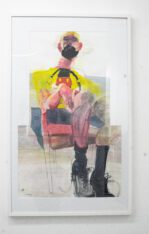

Photo by Lilac Burrell
There are some 700,000 LGBTQ-identifying people in New York, a number that is surely discounted by fear of coming out. By showing openly gay art, Niztberg hopes his figurative work expands on what it means to be gay and seen in the world.
But beyond that, through his work, Nitzberg, who has been teaching figurative art and painting since 2016 at the Art Students League of New York, renders bodies with warped forms and details to reflect on body dysmorphia. Here, the body becomes an ensemble of parts that show personal agency, safety and security in individual imperfections. Characteristics of body euphoria — joy and self-acceptance when seeing and preserving one’s own body — in his art are deepened by distorting drawings with shape and weight to find balance in his lines.
“I’ll do large shapes with small lines, like pushing and pulling the anatomy so it will look beautiful. It’s very subjective,” Nitzberg said. “Which muscles are they’re really big in certain areas, really small in certain areas, and kind of looking at what is beauty and masculinity.”
“Queer Permutations,” as its title suggests, also conjures issues around underdiagnosed body dysmorphic disorder, which affects all ethnicities, classes and gender — an issue for up to 40 percent of men and 60 percent of women. Nitzberg’s goal: to turn masculine body dysmorphia into body and gender euphoria.
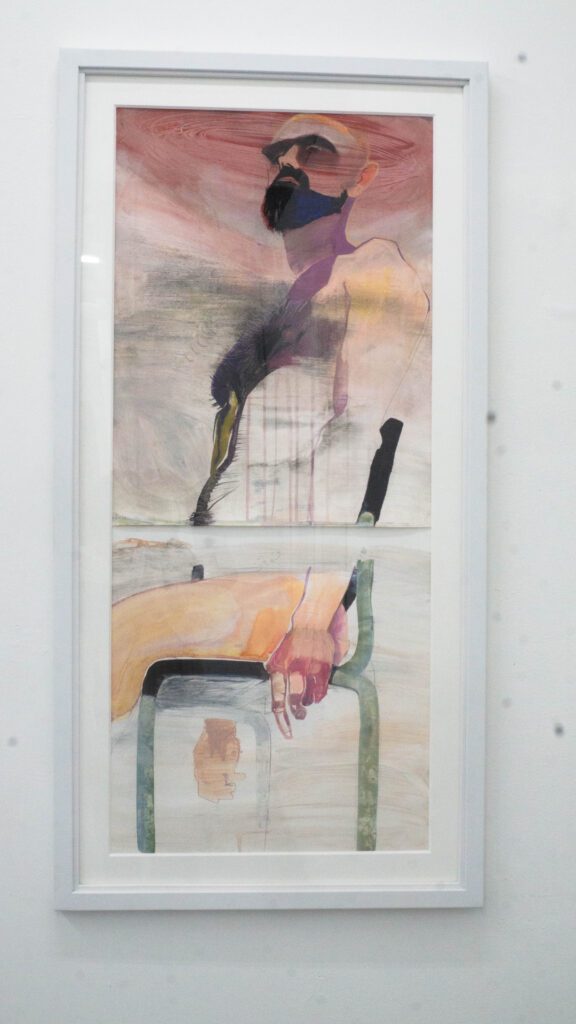

Photo by Lilac Burrell
“So we’re really excited about the new exhibit because the artist got the show what he wanted,” says Black Brick Project gallerist, Diego Anaya. “Twenty to 30 years ago, he didn’t feel, like, confident to do something like this, because it was a different world.”
Nitzberg, who started out as a gouache and fashion artist in the 1970s, earned his degree from the Rhode Island School of Design in 1975 and continued studying between 1976 and 1986 at FIT, Parsons School of Design, and Cooper Union. His work has been featured in galleries like Phyllis Harriman Mason Gallery NYC, Atlantic Gallery NYC, and Leslie Lohman Museum Of Art NYC.
From having studied fashion, he leans on Croquis gestures that highlight essential elements like tone and lighting and editorial gestures to highlight character through precise details. By balancing these styles, Nitzberg’s art encourages his audience to aspire for the confidence to be seen and feel empowered by vulnerability.
“I’m thrilled that people like it. But I’m only work doing it like I want. I want to get that feeling, you know?” says NItzberg. “It’s better than sex. It’s better than a great meal, just anything to have a perfect wonderful drawing. And they’re not ever perfect.”
“Queer Permutations” will be on display at the Black Brick Project until November 26. 17 N Oxford Street
You might also like 


















